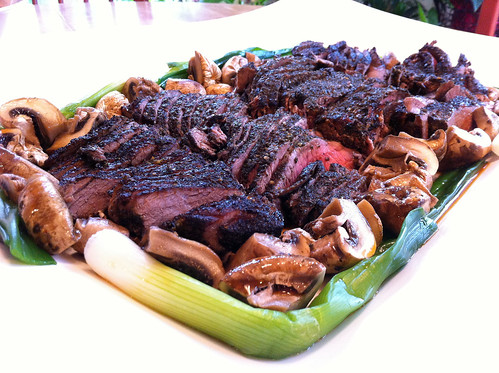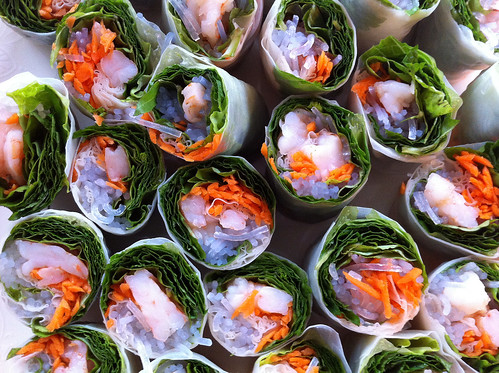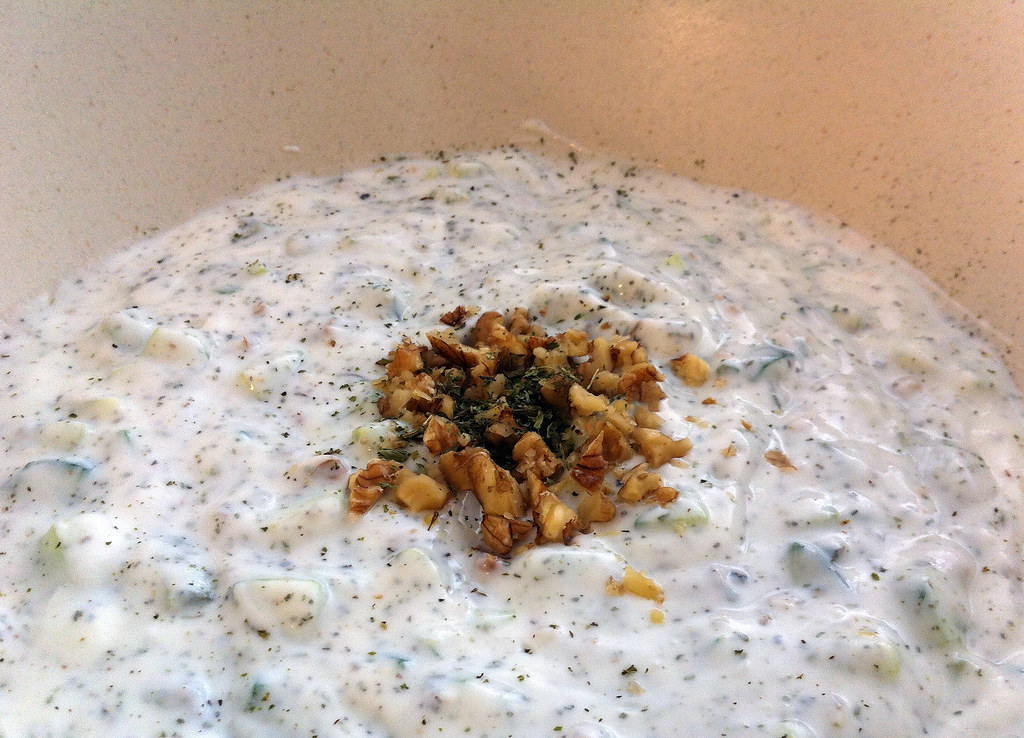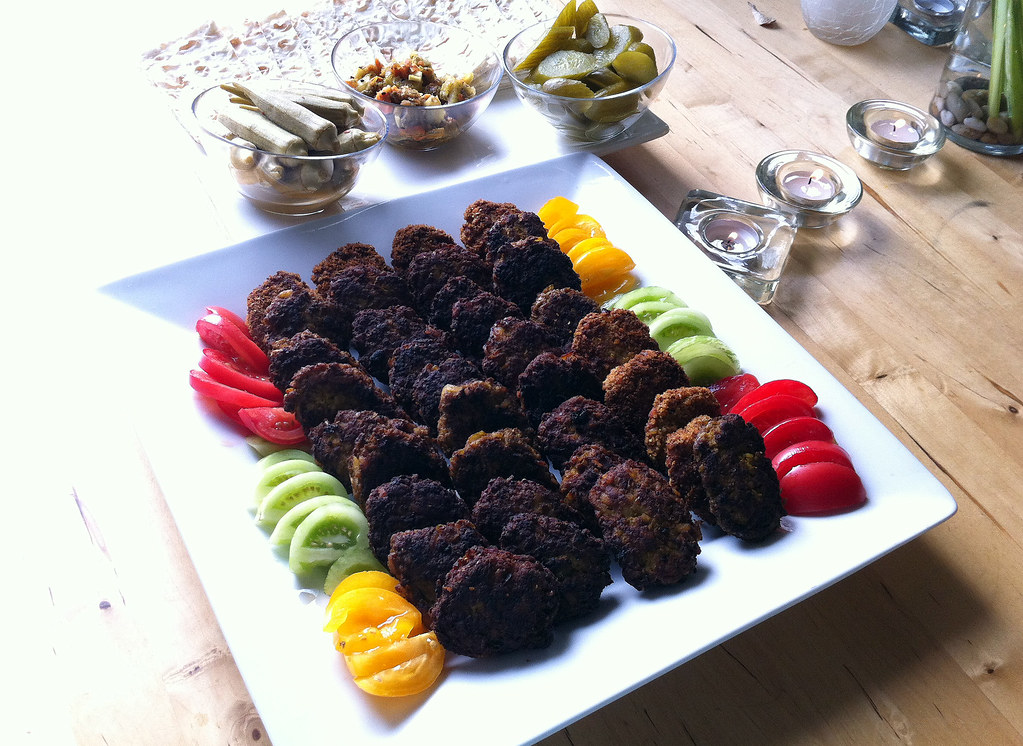I first made this dish several years ago, adapted from a recipe in the now defunct Gourmet Magazine. Since then, it’s become my most-requested meat entree, and even though it takes a some work to pull off, it’s worth it. Make sure to serve this with plenty of steamed rice to soak up the sauce.
Ingredients:
2 bunches green onions
1/2 pound shiitake mushrooms, stems discarded
salt and pepper
1 pound sirloin steak
2 square sheets of nori seaweed, torn into small pieces
1 tablespoon sesame seeds
1 teaspoon crushed red pepper
1 1/2 tablespoons olive oil
2 tablespoons soy sauce
1 tablespoon mirin
1 teaspoon fresh lemon juice
1. Preheat the oven to 400 degrees. In a small saucepan of boiling water, blanch the green onions for 2 minutes. Drain and rinse under cold water. Set a rack on a baking sheet and arrange the shiitake mushroom caps on the rack, gill sides down. Season lightly with salt and pepper.
2. Season the steak with salt. In a food processor or spice grinder, coarsely grind the nori with the sesame seeds, red pepper and 1 teaspoon black pepper. Spread the nori mixture on a plate and dredge the steak in it.
3. In a medium skillet, heat 1 tablespoon of the olive oil until shimmering. Add the steak and cook over high heat until the nori is toasted, about 4 minutes per side. Place the steak over the mushrooms and roast for about 15 minutes, until the meat is medium rare. Transfer the steak to a cutting board and let rest for 10 minutes.
4. Meanwhile, quarter the mushroom caps. In a small bowl, whisk the soy sauce with the mirin, lemon juice and the remaining 1/2 tablespoon of olive oil.
5. Slice the steak 1/4 inch thick and arrange it on plates with the shiitake mushrooms and scallions. Drizzle the soy mixture over the steak and serve.





